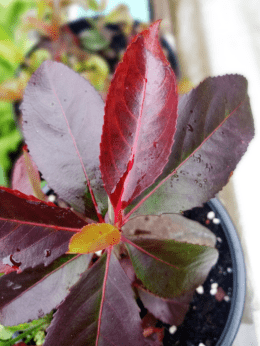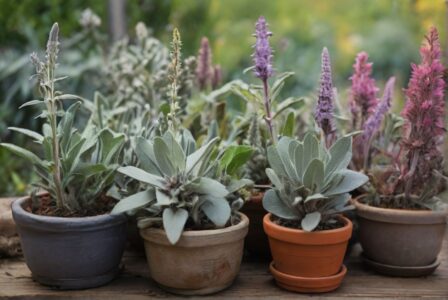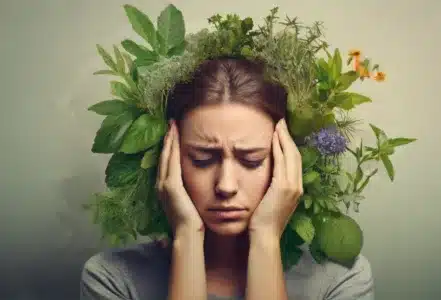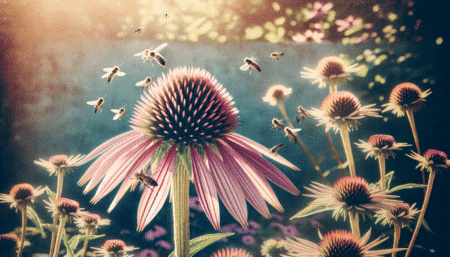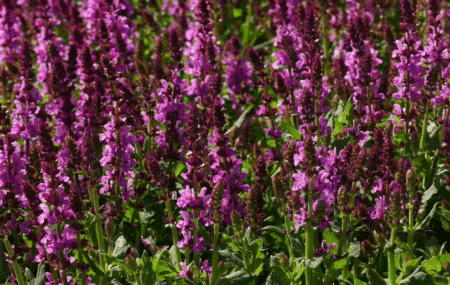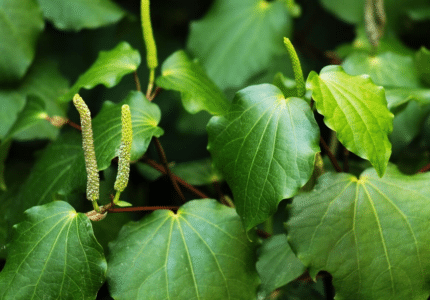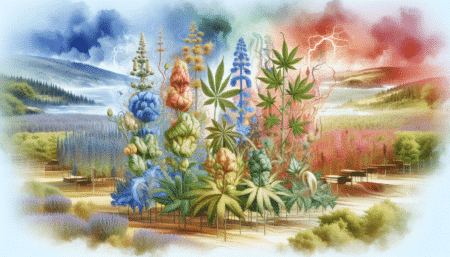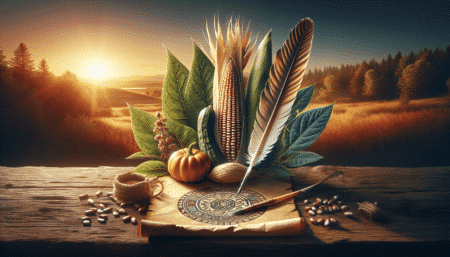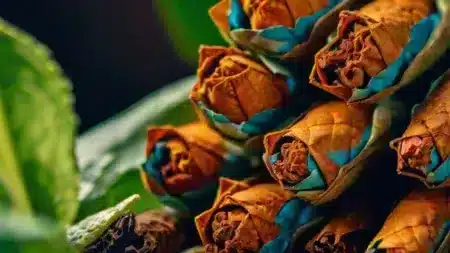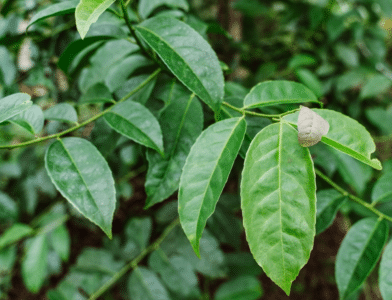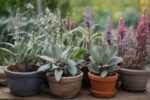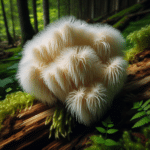- What is khat?
- Why is khat grown?
- What factors influence the cultivation of khat?
- Where is khat grown?
- How is khat grown and processed?
- What are the risks associated with growing khat?
- What impact does illegal cultivation have on the environment and local communities?
- Conclusion
HERE you can find our selection of different khat seeds!
Growing khat
You may have wondered what growing khat is all about. In this blog article, you will learn everything you need to know about this plant. We will look at why khat is grown, what factors influence its cultivation and where it is grown. We'll also take a look at how khat is grown and processed, the risks involved and how companies can minimize the risk of illegal cultivation. We will also look at the impact of illegal cultivation on the environment and local communities. Finally, we will discuss how to deal with the illegal cultivation of khat in order to avoid negative consequences. Are you ready to dive into the world of khat cultivation? Then read on and be surprised!
1 What is khat?
Khat is a plant that is mainly cultivated in East Africa and on the Arabian Peninsula. The leaves of the khat plant are traditionally chewed and contain alkaloids such as cathinone, which has similar effects to amphetamines. In some countries, khat is also prepared as tea or smoked. The cultivation of khat is widespread due to the strong economic potential of this plant. Especially in countries with weak economies, the cultivation of khat can be an important factor for the income of farmers. However, there are also risks associated with the cultivation of khat, especially if it is done illegally. Companies can help minimize these risks by ensuring that their khat comes from legal sources and that environmental and social standards are met during production. Illegal cultivation can not only have a negative impact on the environment, but can also lead to social problems, as children are often forced to work or valuable resources are used in an uncontrolled manner. It is therefore important to ensure that the cultivation of khat is sustainable and benefits local communities.
2 Why is khat grown?
Why is khat grown? The answer to this question is complex and depends on various factors. One of the main reasons for the cultivation of khat is the high demand for this plant in certain regions of the world, particularly in Yemen, Somalia and some other countries in the Middle East and East Africa. Khat is traditionally used as a stimulant and has a similar effect to caffeine or nicotine. It can help combat fatigue, increase awareness and improve mood. In addition, the economic importance of khat also plays a role in the cultivation of this plant. In many rural areas where there are few alternative sources of income, the cultivation of khat can be an important source of income. However, there are also risks involved, as illegal cultivation is often associated with environmental damage and social conflict.
3. what factors influence the cultivation of khat?
When it comes to growing khat, there are many factors to consider. One of the most important factors is the climate. Khat needs a lot of sunlight and warmth to grow well. Therefore, it is mainly grown in tropical and subtropical areas. However, not only the climate influences the cultivation of khat, but also the soil quality and availability of water play an important role. The plant requires fertile soil with sufficient moisture in order to thrive. Another factor is the demand for khat on the market. If the price is right and there are enough buyers, farmers are more likely to decide to grow khat. However, this can also have negative effects: As the profit from the sale of khat is often higher than for other agricultural products, some farmers opt for monoculture and neglect other crops. Finally, the legal situation also plays a role in the cultivation of khat. In some countries, such as Germany, consumption is legalized, while in other countries, such as the UK or the USA, both consumption and possession are illegal. As a result, cultivation is often illegal and can therefore pose risks to the environment and local communities. Overall, it can be said that various factors influence the cultivation of khat. It is important to consider these factors to ensure sustainable production and minimize negative impacts on the environment and communities.
4 Where is khat grown?
The cultivation of khat is mainly restricted to certain regions in Africa and Arabia. The plant grows best at altitudes between 1500 and 2000 meters above sea level, where the climate is humid and warm. Khat is therefore mainly cultivated in East African countries such as Kenya, Ethiopia and Somalia. However, the plant is also traditionally cultivated and consumed in Yemen and Saudi Arabia. Although the cultivation of khat can be illegal, it remains an important source of income for many local communities in these regions. However, the impact of illegal cultivation on the environment is often devastating, as forests are cleared to make way for cultivation. Companies should therefore ensure that they only source from legal sources to minimize the risk of illegal cultivation while contributing to sustainability.
5 How is khat cultivated and processed?
When it comes to growing khat, it is important to know how this plant is cultivated and processed. As a rule, khat grows best at altitudes between 1,500 and 2,500 meters above sea level. The best time for sowing is in spring or fall, when the soil is still moist and warm enough. After sowing, it takes about a year until the plants are mature enough to be harvested. During this time, they need to be watered and fertilized regularly. As soon as the leaves have grown sufficiently, harvest time begins. The leaves are carefully picked and then dried or sold fresh. If they are to be dried, they must dry quickly so that they retain their color and do not lose their quality. The processing of khat depends on how it is consumed. Some people simply chew the fresh leaves or drink a tea made from them; others prefer dried leaves or extracts in tablet form. However, there are also risks associated with the cultivation of khat - for example, a dependence on income from the trade in illegal drugs and negative environmental and social impacts from illegal practices in the production or transportation of khat. To minimize these risks, companies should focus on legal alternatives and invest more resources in local communities to create jobs that are not dependent on drug trafficking. The government can also contribute by legalizing the cultivation of khat and thus enabling a controlled trade.
6 What are the risks associated with the cultivation of khat?
There are various risks that need to be taken into account when growing khat. One of the biggest risk factors is the illegal distribution of khat in certain countries. The illegal cultivation and trade of khat can lead to high penalties, as it is classified as illegal in many countries. Ecological factors are also an important aspect in the cultivation of khat. The plant requires a lot of water and nutrients, which can lead to overuse of the soil. The intensive use of pesticides can also have a negative impact on the ecosystem. Another problem is the social component: many farmers see the cultivation of khat as a lucrative source of income and therefore neglect the cultivation of other foods or crops. In the long term, this can lead to a dependency on khat cultivation and thus contribute to the instability of the local economy. To minimize the risk of illegal cultivation, companies can focus on fair trade and advocate for the legalization of cultivation. It is important that the local population is involved in decision-making and that alternatives to khat cultivation are offered. Overall, all parties involved in the production of khat should ensure that ecologically sustainable practices are applied and socially acceptable solutions are found. This is the only way to prevent negative consequences and ensure that khat cultivation can be a fair and sustainable source of income in the future.
7. what impact does illegal cultivation have on the environment and local communities?
When khat is grown illegally, it can have a serious impact on the environment and local communities. Illegal cultivation often means that farmers have to resort to dangerous chemicals such as pesticides to protect their crops. These chemicals can leach into the soil and pollute groundwater, which can cause long-term damage to the environment and also to people's health. Furthermore, illegal cultivation often leads to land grabbing. Farmers are forced to sell their land for the cultivation of khat to illegal traders or it is simply taken away from them. As a result, many families lose their livelihoods and are forced to live in poverty. Violence is also a major problem with illegal khat cultivation. Conflicts between rival groups, including armed gangs and militias, can break out and endanger innocent people. To minimize these negative effects of illegal khat cultivation, it is important that companies take responsibility and ensure that they only buy from legal sources. Government authorities should also take measures to curb the illegal cultivation of khat and thus protect the environment and local communities from it
8. conclusion
Having looked at the various aspects of khat cultivation, it is important to draw a conclusion. Although khat is grown and consumed legally in some countries, there are also many concerns about its cultivation and the impact on the environment and local communities in the regions where it is grown illegally. Companies should be aware that the illegal cultivation of khat is not only illegal, but also has a negative impact on society and the environment. Therefore, they should ensure that their supply chain is free of any illegal trade. However, it is not just up to the companies alone - governments must also take action and combat illegal cultivation and create alternative income opportunities for the affected communities. Overall, the goal should be to promote sustainable production of khat while minimizing the negative impacts of illicit cultivation.
Note: The information in this article is for informational purposes only and is not intended to replace the advice of a physician or other healthcare professional. Always consult a doctor before using any new herbs or supplements. Furthermore, you should always check whether certain plants are permitted in your country before growing them.

